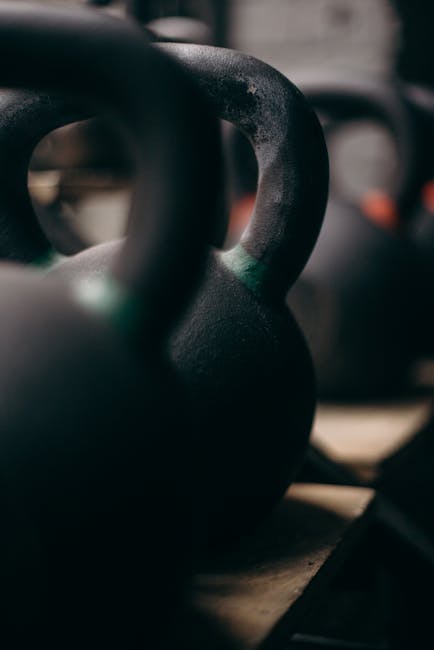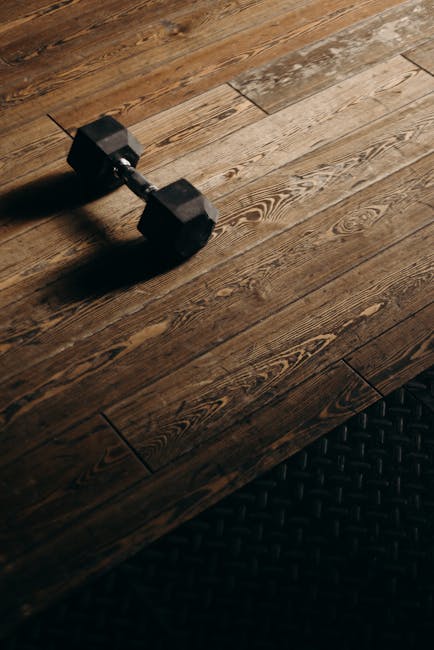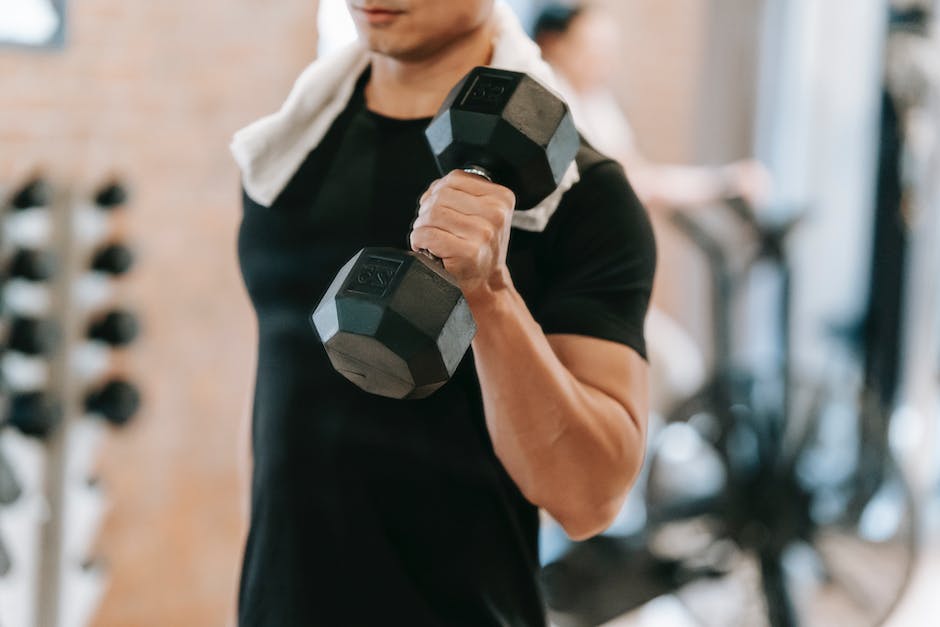So you think you’re tough, huh? You strut up to the squat rack like you own the place, chugging your pre-workout and giving the gym bros a nod of acknowledgement. But wait… what’s missing? Oh, right. You fumble with your weight lifting straps, wrapping them around your wrist like a clumsy kid trying to tie their shoes for the first time. In an instant, all the confidence you had built up vanishes into thin air. Fear not, my fellow gym-rat. I’m here to guide you through the world of proper weight lifting strap usage, so you can lift heavy and look like a boss doing it. So let’s buckle up (literally) and get started!
Contents
- 1 1. Understanding the Importance of Proper Weight Lifting Strap Usage
- 2 2. Choosing the Right Type of Weight Lifting Straps
- 3 3. Proper Technique for Applying and Adjusting Weight Lifting Straps
- 4 4. Avoiding Common Mistakes Involving Weight Lifting Straps
- 5 5. Mastering Your Grip Strength with the Aid of Weight Lifting Straps
- 6 Wrap It Up: You’re Now a Strap-Master
1. Understanding the Importance of Proper Weight Lifting Strap Usage
Proper weight lifting strap usage isn’t just about looking like a pro in the gym. It’s about keeping your limbs attached and avoiding embarrassment in case the weights slip from your grasp. Trust us, nobody wants to be that person who drops the barbell while attempting to impress the gym hottie.
So what’s the secret to using weight lifting straps correctly? Follow these golden rules:
- Know which exercises require straps: Straps aren’t necessary for every exercise. They’re ideal for exercises that put heavy stress on your grip, like deadlifts, pull-ups, and rows.
- Place them correctly: The strap should be wrapped snugly around the bar, leaving enough room for your hand to grip it. The excess strap should be dangling down. This prevents the strap from slipping and causing you to drop the weight.
- Use them as a tool, not a crutch: Straps are meant to enhance your grip, not replace it. Don’t become dependent on them. Instead, use them as a temporary solution while building up your grip strength.
Bottom line? Don’t skimp on proper weight lifting strap usage. Your body, ego, and gym reputation will thank you.
2. Choosing the Right Type of Weight Lifting Straps
So, you’ve decided to dive headfirst into the world of weight lifting straps. Congratulations! You’re one step closer to achieving your dreams of becoming a jacked-up gorilla. But before you start ripping phone books in half, you need to know which type of straps are right for you. Here are a few things to consider:
1. Material – First and foremost, you want to make sure the straps are made of a sturdy material that won’t give out on you mid-lift. Leather and nylon are popular choices, but if you’re feeling really fancy, you can even go for a pair made of unicorn hide (just kidding, please don’t hurt any unicorns).
2. Length – The length of your straps will depend on the type of lift you’re doing and how you like to wrap them around the bar. Some people prefer shorter straps for deadlifts, while others like longer ones for bench presses. It’s all a matter of personal preference, but make sure you get a length that feels comfortable and secure.
3. Style – And finally, let’s talk about style. Because let’s face it, even though your main focus should be on lifting heavy weights, you still want to look cool doing it. Do you want straps with skulls on them? Flames? Your favorite superhero logo? The choice is yours, my swole friend. Just make sure you’re not sacrificing functionality for style (we’re looking at you, light-up disco ball straps).
3. Proper Technique for Applying and Adjusting Weight Lifting Straps
First, let’s talk about applying weight lifting straps. It’s not rocket science, but it’s also not as easy as putting on a pair of socks. Follow these steps for a smooth application:
- Place the loop around your wrist and tighten it.
- Wrap the excess strap around the bar, making sure to leave enough slack to grip the bar comfortably.
- Twist the strap so it’s snug against your wrist. Congratulations, you’re officially strapped in!
Now, onto adjusting your straps. It’s important to get this right, or else you might end up lifting with uneven support. Here’s what you need to do:
- Make sure the strap is centered around your wrist before you start lifting.
- If you’re feeling any discomfort, adjust the tension of the strap accordingly. Not tight enough? Loosen the excess slack. Too tight? Give it a little wiggle room.
- Repeat this process on your next set, because let’s be real – no one is perfect on their first attempt (except maybe Beyoncé).
Finally, a word of caution: don’t overdo it on the tightening. Yes, you want the strap to be secure, but not so tight that you’re cutting off circulation to your hand. Remember, we want bulging biceps, not bulging veins. And on that note, happy lifting!
4. Avoiding Common Mistakes Involving Weight Lifting Straps
So, you’ve decided it’s time to take your weight lifting game to the next level and you’ve invested in a trusty pair of lifting straps. But wait! Before strapping those bad boys on and hitting the weights, there are a few common mistakes you’ll want to avoid.
Firstly, resist the urge to over-tighten your straps. I know you’re excited to get lifting, but overtightening your straps can lead to decreased blood flow and ultimately, a weak-ass workout. Keep them snug, but not suffocating. Trust me – your biceps (and your circulation) will thank you.
Another mistake to avoid? Wearing your straps for exercises that don’t require them. I mean, do you really need straps for bicep curls? Probably not. Save your straps for those big lifts that require some heavy-duty grip assistance, like deadlifts and heavy rows. And hey, if you’re struggling with grip on those curls, maybe it’s time to swap those straps for some good old-fashioned grip training.
Lastly, don’t forget to take care of your straps! They may not be as expensive as your sneakers, but they still deserve some TLC. Give them a good wipe down after each use, and if they start to smell like your gym bag socks, throw them in the wash. And please, for the love of all things holy, don’t lend them out to your gym buddy who never washes his hands (or his gym clothes, for that matter). Keep those straps clean and germ-free.
5. Mastering Your Grip Strength with the Aid of Weight Lifting Straps
Are you tired of your weak grip ruining your gains at the gym? Fear not, fellow fitness enthusiasts! With the aid of weight lifting straps, you can finally become the master of your grip strength. Here’s how:
- Choose the right type of weight lifting straps: There are two main types of straps – the traditional looped straps and the newer figure-eight straps. Try both and see which ones work best for you. Just make sure they’re made of quality materials so they don’t snap mid-lift and leave you with a barbell-shaped dent in your forehead.
- Don’t rely solely on straps: A wise man (or woman) once said, “Use weight lifting straps as a tool, not a crutch.” Straps are great for helping you lift heavier weights, but don’t forget to work on your grip strength too. Incorporate grip-strengthening exercises into your routine like farmer’s walks, plate pinches, and wrist curls.
- Adjust the straps properly: This may seem like common sense, but you’d be surprised how many people don’t know how to properly adjust their weight lifting straps. Make sure the straps are tight enough to support the weight, but not so tight that they cut off circulation to your hands. And for the love of all that’s holy, don’t forget to wrap the straps around the barbell the proper way (underhand grip, overhand strap).
So there you have it, folks. With the right type of straps, a commitment to improving your grip strength, and proper adjustment, you too can master your grip game. Now go forth and lift heavy!
Wrap It Up: You’re Now a Strap-Master
Congratulations! You’ve made it to the end of this article and are now a certified expert on proper weight lifting strap usage.
No longer will you be the person struggling to lift heavy weights and constantly gripping onto the bar for dear life. You’ll be strapping up with confidence, ready to take on any weightlifting challenge that comes your way.
Remember, with great lifting power comes great responsibility, so use your new knowledge wisely. And if anyone asks how you got so good, just tell them you learned it all from an article on the internet. They’ll be impressed and a little confused.
Now go forth, my fellow strap-masters, and lift with ease!








Leave A Comment